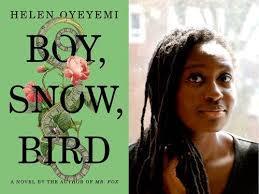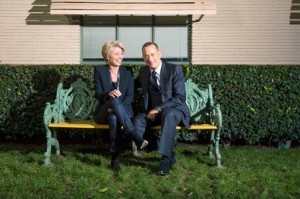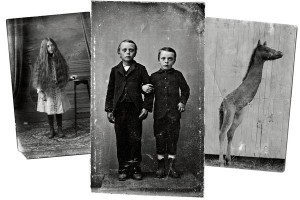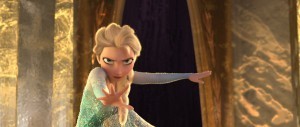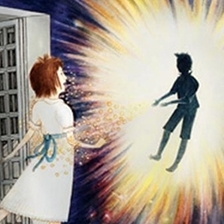Maria Tatar's Blog, page 14
March 8, 2014
Morse Institute Library in Natick
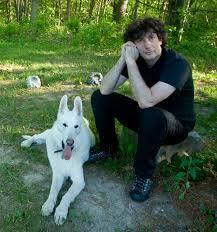 Looking forward to talking about fantasy and Neil Gaiman’s Ocean at the End of the Lane on March 10 at 7pm.
Looking forward to talking about fantasy and Neil Gaiman’s Ocean at the End of the Lane on March 10 at 7pm.
NATICK READS NEIL GAIMAN EVENTS Once upon a Time with Professor Maria Tatar, Monday, March 10, 7 p.m., Lebowitz Meeting Hall, lower level. Ever wonder how tales of fantasy began and why they survive for generations? In this lecture, Professor Tatar will take us on a historical fantasy journey showing us the social origins and historical evolution of folklore and fairy tales including the fantasy of Neil Gaiman. Come be enchanted. Maria Tatar is the John L. Loeb Professor of Germanic Languages and Literatures at Harvard University. She chairs the Program in Folklore and Mythology where she teaches courses in German Studies, Folklore, and Children’s Literature. She is the author of numerous annotated books including “The Annotated Grimm’s Fairy Tales” and “The Hard Facts of the Grimm’s Fairy Tales.” No registration required. Book copies available at the Circulation Desk. Teens and up welcome. Mature content may not be appropriate for some younger readers.
http://natick.wickedlocal.com/article/20…
March 7, 2014
Are ‘Golden Age’ TV Shows the New Novels?
 Adam Kirsch and Mohsin Hamid ask whether new tv shows like House of Cards, The Wire, and The Sopranos are now doing the cultural work that novels once did.
Adam Kirsch and Mohsin Hamid ask whether new tv shows like House of Cards, The Wire, and The Sopranos are now doing the cultural work that novels once did.
Here’s Adam Kirsch:
One criticism that could be leveled against quality cable TV is that it is not nearly as formally adventurous as Dickens himself.
Television was so bad for so long, it’s no surprise that the arrival of good television has caused the culture to lose its head a bit. Since the debut of “The Sopranos” in 1999, we have been living, so we are regularly informed, in a “golden age” of television. And over the last few years, it’s become common to hear variations on the idea that quality cable TV shows are the new novels. Thomas Doherty, writing in The Chronicle of Higher Education, called the new genre “Arc TV” — because its stories follow long, complex arcs of development — and insisted that “at its best, the world of Arc TV is as exquisitely calibrated as the social matrix of a Henry James novel.”
Some years ago, the dramatist Bertolt Brecht declared that his plays would begin to “narrate,” to tell stories rather enact scenes. And now television seems to have made a similar assertion.
If there is one thing that the novel does supremely well, it is to enable us to read the minds of its characters. The writers of fiction can take us seamlessly from scenic description to the trappings of the mind, letting us get inside the heads of characters and explore a mental apparatus that is nuanced, contradictory, and complex. For that reason, the novel seems in no great danger of losing its hold on our imaginations. House of Cards moves into a novelistic mode every time Frank Underwood turns to the camera and reveals his thoughts to us in a manner that is uncannily Brechtian. But still he wears a mask in ways that characters in a Dickens’ novel rarely do.
House of Cards, like Downton Abbey and other serial television adventures, draws much of its power from the collision of deeply personal family matters with political intrigue on the world stage. It offers visual pleasures (faces, costumes, landscapes) that the novel, with its black squiggles on white pages, cannot possibly recreate. Even the sorcery of a Nabokov falls short on that score. But who else can take us inside the mind of a predator and turn him our soulmate, our brother, our friend?
I readily admit to my new addiction to tv shows–guilty as charged–but last week, it was Richard Wright’s Black Boy that had me hooked in ways that television never has. And one of the great pleasures of binge reading is that you never ever feel a trace of guilt.
http://www.nytimes.com/2014/03/02/books/…
March 4, 2014
Helen Oyeyemi’s Boy, Snow, Bird
POROCHISTA KHAKPOUR reviews Boy, Snow, Bird, a refashioning of Snow White.
Set in the 1950s, Oyeyemi’s novel opens on the Lower East Side of New York City, with a young white woman named Boy Novak running away from her violent rat-catcher father. She soon meets a widower, a jewelry craftsman and former history professor named Arturo Whitman, in Flax Hill, Mass. She marries Whitman and becomes obsessed by her new stepdaughter, Snow. “What was it about Snow?” Boy asks herself. Oyeyemi paints Snow as half virtual, half corporeal: “She was poised and sympathetic, like a girl who’d just come from the future but didn’t want to brag about it.” All seems well until Arturo and Boy have a daughter of their own, Bird, who is born undeniably “colored.” Whitman’s family members are light-skinned African-Americans who have been passing as white, and the revelation becomes a turning point. The Snow White bits take over, with the Wicked Stepmother and the mirror motifs, and the fairy tale rewrites itself in startling ways.
http://www.nytimes.com/2014/03/02/books/…
February 1, 2014
Storytelling on the Social Network Station and “The Ecology of Pooh”
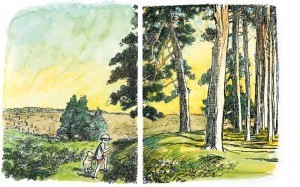
http://aeon.co/magazine/nature-and-cosmo…
Returning to blogging after I finish translating The Enchanted Quill, an anthology of nineteenth-century fairy tales collected by Franz Xaver Schoenwerth. Once you read these stories, you will abandon any ideas about the literary transmission of fairy tales–these are tales in the raw, not cooked to suit the tastes of the literate. My deadline is Sunday at midnight. For now, a fascinating article about the ecology of Pooh, and yesterday’s interview on storytelling with the wonderful Jane and Dr. J. on the Social Network Station.
http://thesocialnetworkstation.com/readi…
January 5, 2014
Anna Holmes Gets It, and a Few Random Thoughts on the Uses and Abuses of E-books
Here’s an excerpt from “How do e-books change the reading experience?”:
Physical, paperbound books provide a sense memory that has informed so many of my most important encounters with storytelling: sight, smell and touch, yes, but also the experience of anticipation, progress and accomplishment. Not to mention recollection. To call to mind a certain Toni Morrison book has as much to do with the care she took in crafting it as the physical sensation of reading it. Twenty-five years after I first read “Song of Solomon,” I still remember the exact location of a particularly devastating, gorgeous passage about the emotional violence inflicted by Macon Dead on his wife and daughters. (It was situated toward the beginning of the novel, at the bottom of a left-facing page.)
Lastly, I feel a certain disappointment in the electronic format’s performative limitations. Anyone who owns and enjoys books understands that the volumes we keep on our shelves — and in our hands on a busy subway — tell several stories. There’s the author’s story, which is the actual text; there’s the publisher’s story, which has to do with the choice of format and design; and, finally, there’s the reader’s story — what a particular book telegraphs about one’s education and tastes. Who or what we choose to read can be as telling as the clothes we wear, and an e-book feels like a detail withheld, even a secret kept. (This is not necessarily a bad thing, and it probably explains why the three books I own about dealing with a loved one’s alcoholism are on my Kindle, not my bookshelf.) Unlike the shopworn cover of an early paperback edition of “Native Son” or the crisp jacket on the latest Donna Tartt, Kindles and Nooks tell others little to nothing about their owners, except that they enjoy a certain amount of disposable income.
At the very least, physical books provide a convenient and visible distraction: What else are wallflowers at pretentious cocktail parties supposed to busy themselves with? Oh, right: their iPhones.
http://www.nytimes.com/2014/01/05/books/…
An astonishing number of comments come from readers with disabilities. Here’s a particularly moving example:
My left hand remains very balky after a small stroke two years ago. It seemed for a while that my leisure activity of choice was a thing of the past: page turning became a real chore and it was nearly impossible to keep a book in my hands for more than a minute before it landed on the floor. Enter Kindle rigged with a Velcro strap. I flip pages with my thumb and have no trouble keeping “my book” at the perfect reading angle. It is lighter than almost any book available in “dead tree” format and even my old Kindle is visually sharp. I understand the appeal of paper books but find the objections to e-readers irrelevant.
Does anyone else have the feeling, with an e-reader, that you are being turned into a revenue stream for Amazon? Not that that isn’t also true of print books as well. An additional concern is the proliferation of books on Amazon like the one linked to the url below. It is nothing more than a 20 page research paper, with sources like wikipedia, put together in a day or two. I made the mistake of purchasing it.
http://www.amazon.com/The-Real-Life-Mary…
Finally, on two occasions, Amazon has sold e-book versions of The Annotated Peter Pan, unauthorized copies made and sold on Amazon until I wrote in to ask to have them removed (and they were).
Hollywood Reads
There’s an old chestnut in Hollywood about how no one in the town reads. If that’s the case, Saving Mr. Banks is the exception that proves the rule. The depth of Emma Thompson’s understanding of P.L. Travers’s character is astonishing, and it’s clear that she took the role seriously enough to read, while the scriptwriters actually did research. It’s heartbreaking to hear what one of the scriptwriters reported–and the brilliant Tom Hanks has just the right antidote to the sadness:
Last night, when we were doing a Q. and A., Kelly [Marcel] said [Travers’s] grandchildren had said she’d died not loving anyone and nobody loving her. At which point, Tom burst into song.
You sang? Tom, what did you sing?
Tom Hanks “Let’s Go Fly a Kite.” I needed to Disney-fy up the sad ending. [Laughs.]
And here’s Tom Hanks in that same interview about Saving Mr. Banks in the NYT, with fascinating insight into how Disney came to make the film.
Disney’s chief executive, Robert A. Iger, called and] said: “Look, we have a bit of a circumstance here. We have to make this movie about Walt Disney. We didn’t develop it. It came to us from somewhere else. It’s a great script, and if we don’t do it, that means somebody else might be able to do it, and we’re going to look heartless. But if we quash it, we’ll look like we’re trying to hide something. So will you play Walt Disney?”
http://www.nytimes.com/indexes/2014/01/0…
Jerry Griswold reviewed the movie, and he reveals a darker side to the feel-good ending, which enables the corporate to triumph over the creative. Included in the review is a link to his extraordinary interview with P.L. Travers in The Paris Review.
http://sdsuchildlit.blogspot.com/2013/12…
The odd thing about Saving Mr. Banks is that in this contest between the creative side and the corporate side, we’re supposed to sympathize with corporate. We’re supposed to join in patronizing the writer. Over all, someone seeing the film would reasonably conclude that Travers was an extraordinarily difficult person and Disney a nice guy. And alas, given their reach, it may be the Disney folks who get the last word.
January 3, 2014
Miss Peregrines’s Home for Peculiar Children
Maria Russo interviews Ransom Riggs in Santa Monica:
http://www.nytimes.com/2013/12/31/boo...
Mr. Riggs’s attraction to haunting photographs eventually became the catalyst for his first novel, “Miss Peregrine’s Home for Peculiar Children” (2011), a surprise best seller, whose plot was inspired by the dozens of vintage snapshots featured in its pages, which add to its uncanny atmosphere. With the film rights to “Miss Peregrine’s Home for Peculiar Children” sold to 20th Century Fox (Chernin Entertainment is aiming for a summer 2015 release), and “Hollow City,” the second book in a planned “Miss Peregrine” trilogy, to be published in January, Mr. Riggs is beginning to feel at home in a career he calls “accidental.”
It was in 2009 that Mr. Riggs, a graduate of the University of Southern California’s film school, stumbled on a trove of vintage snapshots at a flea market and felt the stirrings of an obsession.
“I realized I can find these amazing little lost pieces of art and be my own curator and rescue them from the garbage,” he said, “and they’re a quarter each.” Long a connoisseur of abandoned houses and mysteriously desolate landscapes, Mr. Riggs said he was drawn to odd or disturbing photos that suggested lost back stories.
December 27, 2013
Saving the Grownups
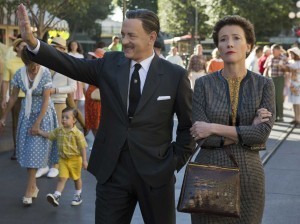
Anthony Lane’s review of Saving Mr. Banks reveals exactly how the film succeeds in captivating our attention:
“Sun came out to say hello to you!” Travers’s driver (Paul Giamatti) says, as she arrives in Los Angeles. “Don’t be preposterous,” she replies, and the movie is revived by that testiness and wit—the same qualities that rang through the fantastical briskness of the Poppins novels. Just as Mary rescued the wilting Banks family, so Thompson saves the film. A spoonful of her medicine makes the sugar go down
http://www.newyorker.com/arts/critics/ci…
Beyond the collision of acerbic wit with a sunny disposition, there are powerful competing arguments in the film about what is “for your own good” when it comes to entertainments for children. ”Where is the gravitas?” Travers asks a befuddled Walt Disney, who is committed to spiritual uplift with jaunty dialogue and upbeat tunes. After all, Mary Poppins, as the screenwriters imagine the book, was born of an adult’s need to work through childhood trauma. Walt and Pamela both suffered as children, with Walt bending to the will of an exploitative father who insists that his sons help out in the family business by delivering newspapers, no matter how cold it is or how long it takes, and Pamela witnessing an alcoholic father’s painful descent into dysfunction, illness, and death.
As adults, the two take different approaches to producing entertainments for children, and their views mirror the bifurcation of opinions in the field of children’s literature, with protectionists on one side and the “anything goes” folks on the other. Real life is fairly miserable, Rousseau lectured parents, and you might as well indulge the young. “Love childhood,” he wrote in his educational tract Emile, “promote its games, its pleasures, its amiable instinct.” That’s just what Walt Disney would say. Travers, by contrast, takes the view that we should not sugarcoat, that we should not play “let’s pretend” and instead teach children about the harsh realities of life. Mary Poppins does not exactly belong to the “hard facts” school of children’s literature, and Disney entertainments, as we know from all those crafty wicked figures dressed in purple and black (with a touch of gold), give us more than spoonfuls of sugar. But Saving Mr. Banks offers a great little tutorial on the high stakes in the game of writing for children, and it reminds us, in its title, as elsewhere in the film, that the redemption of adults might be the real holy grail sought by authors of children’s books.
December 1, 2013
Fire and Ice at the Box Office
 Disney’s Frozen, inspired by Hans Christian Andersen’s Snow Queen, has joined with Catching Fire to top this weekend’s box office. And here’s Steven Holden reviewing Frozen:
Disney’s Frozen, inspired by Hans Christian Andersen’s Snow Queen, has joined with Catching Fire to top this weekend’s box office. And here’s Steven Holden reviewing Frozen:
http://www.nytimes.com/2013/11/27/movies…
Black Friday arrived at the box office this Thanksgiving weekend with moviegoers showing sustained appetite for leftovers. In its second weekend in theaters, “The Hunger Games: Catching Fire” is on a course to not only come in first; it may score one of the most robust opening weekends in movie history.
The sci-fi sequel to 2012’s “The Hunger Games,” “Catching Fire” hauled in $31.2 million Friday, putting it in position to smash the five-day Thanksgiving holiday record — of $82 million held by “Harry Potter and the Sorcerer’s Stone” — with a projected $113 million gross.
The Disney animated kids’ flick “Frozen” took in a robust $26.8 million for second place, also putting the Hans Christian Andersen-based fairy tale film on track to break the “Sorcerer’s Stone” record with a projected five-day take of around $93 million
Click here for the Frozen trailer.
And here’s Brooks Barnes on the Frozen and how it was marketed to girls and boys:
http://www.nytimes.com/2013/12/02/movies…
For “Frozen,” very loosely based on the Hans Christian Andersen fairy tale “The Snow Queen,” Disney’s marketing ploys seemed to work. About 43 percent of the opening-weekend audience for the movie was male, according to exit polls. To compare, the first weekend of “Tangled” drew a crowd that was 39 percent male.
November 29, 2013
Royal Shakespeare Company’s Wendy & Peter Pan
Click on the link below for the trailer
In J.M. Barrie’s play Peter Pan, Wendy spends a good deal of time darning socks and telling stories. She recreates home, with all its hostility to disorder and unruliness, in Neverland. The Royal Shakespeare Company seems to be re-imagining Wendy in great new ways. I wish I could have included this version in Annotated Peter Pan.
Maria Tatar's Blog
- Maria Tatar's profile
- 316 followers


